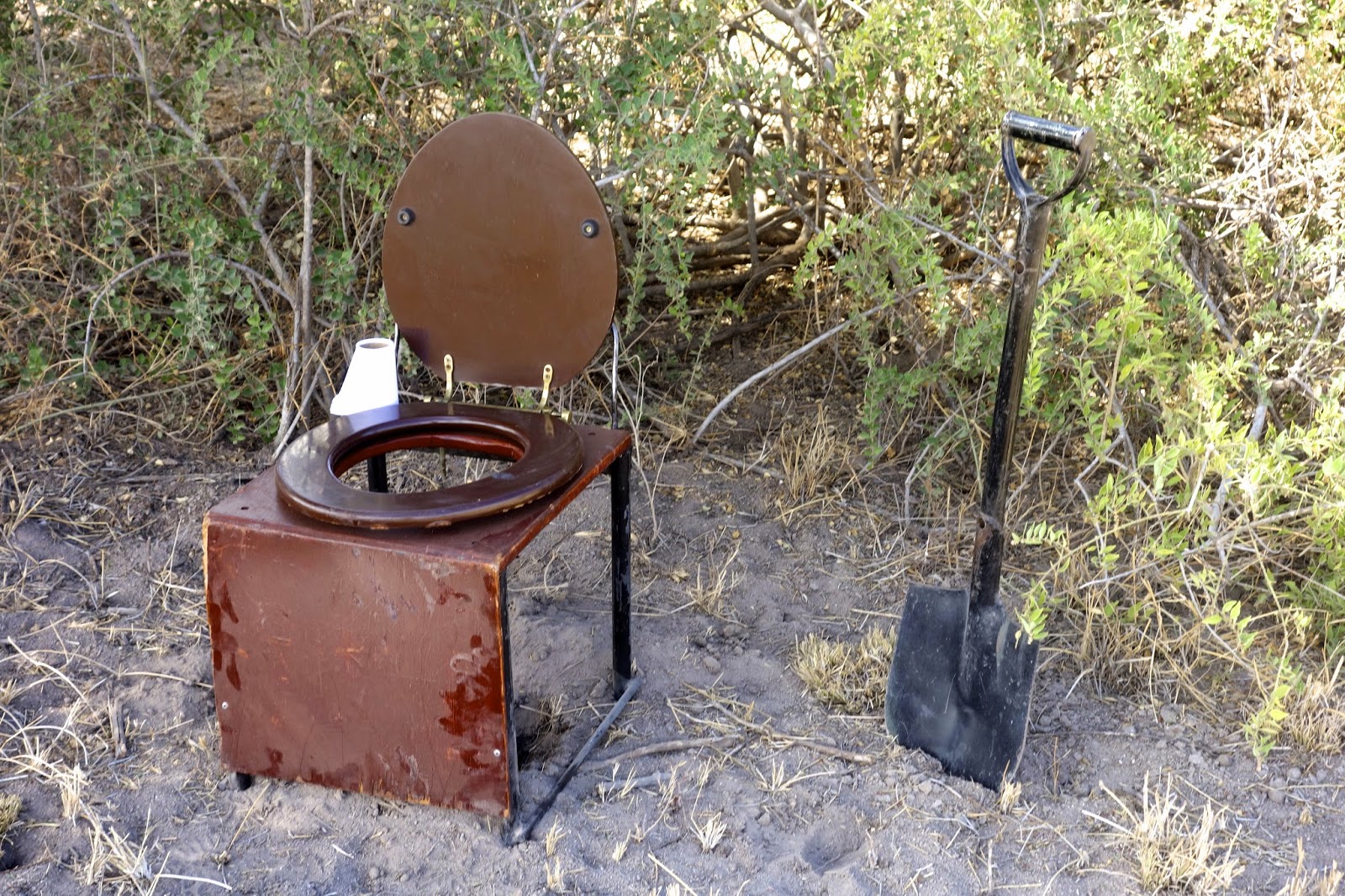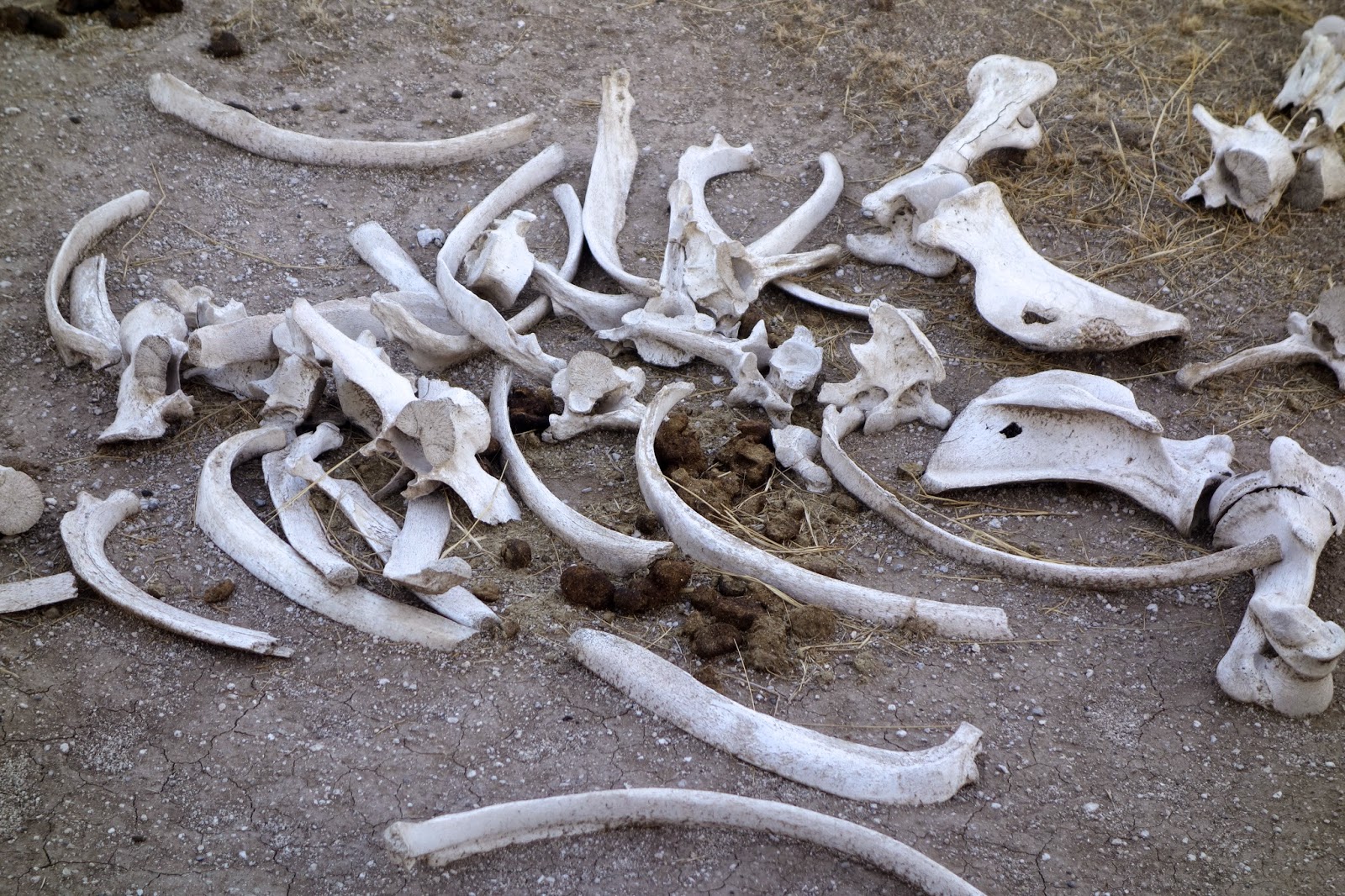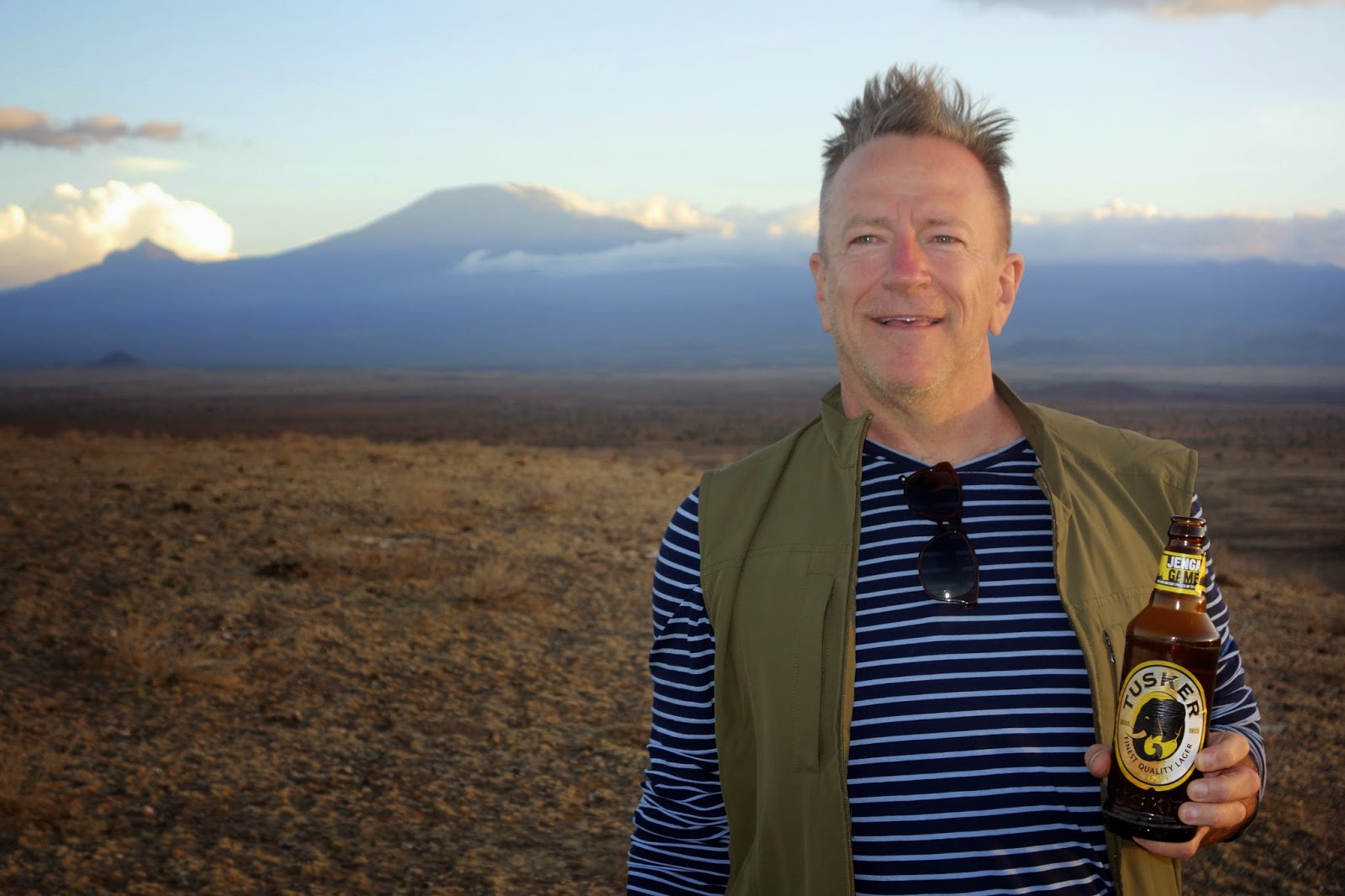Mount Kilimanjaro beckoned in the distance. Clouds cover its peak, the highest in Africa, as often as not. But thanks to global warming, the snow cap is much reduced from Hemingway's day.
Daniella upgraded us to a "family tent" (which we are, kinda). It included a semi-private infinity pool and magnificent views of Kilimanjaro.
Talk about deluxe--even the birds live high on the hog at Tortilas.
Joel made sure we had Africa's other indispensable kind of water bottle and a shawl for our 4:30 p.m. afternoon drive. African evenings can be chilly, particularly in open safari vehicles like our triple tier Land Rover which came equipped with camera battery re-chargers.
Joel was disappointed to learn that we were no longer "safari virgins" because they're so easy to please. Safari guides routinely share information about animal sightings via short wave radio so he didn't waste any time getting us to our first money shot. He drove right up to this lioness, calling her Princess as if they were old friends. She yawned and napped, oblivious to the frenzy of our cameras.
Truth be told, I thought the Princess was a little mangy and began yawning myself after half an hour or so. She grew alert quite suddenly.
It doesn't take much to transform a lazy house cat into queen of the jungle.
After the ostrich relieved itself for a final time, Dan caught the kill on videotape as the rest of us watched in fascinated horror. Chris described her actions as "intimate." Thom averted his eyes. If it had been a giraffe in her death grip, I would have shut mine.
Joel was as excited as we were. Though he never had seen a lion take down an ostrich during his 15 years at Tortillas, he knew Princess and her pride would be returning in short order for their din din.
We rose early the next morning, hoping to catch a glimpse of the feast.

Sure enough, the pride gathered in the vicinity of last night's kill.
But they didn't leave much behind besides these feathers, entrails and
. . . a still bloody ribcage.
Wouldn't you do this the morning after a big meal?
Just in case we felt the urge to relieve ourselves during the catered "bush breakfast" that followed, Tortilis Camp staff considerately made sure we had a semi-private place to do so without having to squat.
Tawny eagles like this one in the tree help pick bones clean, no matter what the main course.
Jackals actually eat the bones which makes their white scat easy to identify.
Plenty of future potential meals strolled about the savanna.
Crested cranes and marabou are among the other birds we encountered. They helped Joel increase the count of animals, birds and reptiles we were seeing for the first time with him.
Elephants roam freely throughout Amboseli. The bulls stand alone (unless they're breeding) and the cows travel in herds.
In my excitement at finding ourselves in the midst of one herd (listen closely and you'll hear Joel say "don't move") I couldn't find the right exposure for this video.
In Maa, the tribal language, a word that sounds like Amboseli means "dry and salty. Run off from Mount Kilimanjaro feeds the swamps that enable the abundant wildlife to live here year-round.
Would you believe that there's a hippo fully submerged in this swamp beneath these air bubbles?
During our three days at Amboseli, we also saw hundreds of zebra and wildebeest and an agama lizard.
A hyena den, too, so established that a road sign (not this one) points the way.
Don't be fooled by the cute cubs. These animals eat their prey while it's still alive.
Dan, Thom and I also visited a local Maasai village. After we paid an entrance fee to a couple of young men, including one of the chief's forty sons, the women welcomed us with a dance.
The Maasai dress colorfully and live off the land.
I didn't see any televisions, but SpongeBob is everywhere.
Our admission included entry into one of the humble, mud and grass huts where the Maasai reside. Needless to say, there isn't any electricity or running water. They shower in the rain.
At the conclusion of our tour, the women created a "pop-up" market by spreading trinkets on blankets for us to buy. Peter, the manager at Amboseli, told us the Maasai drive a hard bargain and that we shouldn't feel obligated to buy.
The men conducted the enjoyable bargaining process. One used his leg and a piece of white chalk to tally the total cost of the souvenirs purchased by Dan.
Afterward the men, convinced of their superior bargaining skills, happily escorted us back to our vehicle.
Some Maasai, mostly women like this one we passed on the way back to the camp, have harder work to do. She's probably unmarried.
As you can see, African landscapes amaze. You never know what Mother Nature may have in store for you. We witnessed this ferocious dust storm from our tent. Clear skies returned in less than an hour.
Joel saved our "sundowner" for Wednesday, our last night in Amboseli. Nothing like drinks, snacks and perfect visibility of a natural wonder to end your stay.
I couldn't believe everyone made a peace sign when I asked. My traveling companions always roll their eyes when I do it.
Joel had one more trick up his sleeve. He played it on our way to the landing strip Thursday morning.
This bull elephant stopped directly in front of our vehicle, roared and twirled his trunk, too, for good measure. Pretty memorable send-off, wouldn't you say?
We flew a Kenya Airways 12-seater back to Nairobi in less than hour. Yes, that's a propellor. It had taken nearly four times as long to get to Amboseli on wheels, but the drive gave us a much better sense of the terrain. You don't see any animals other than livestock outside the game parks. Farmers don't like wildlife, which is the source of one of the basic tensions in the East African economy: tourism vs. development.







































































No comments:
Post a Comment